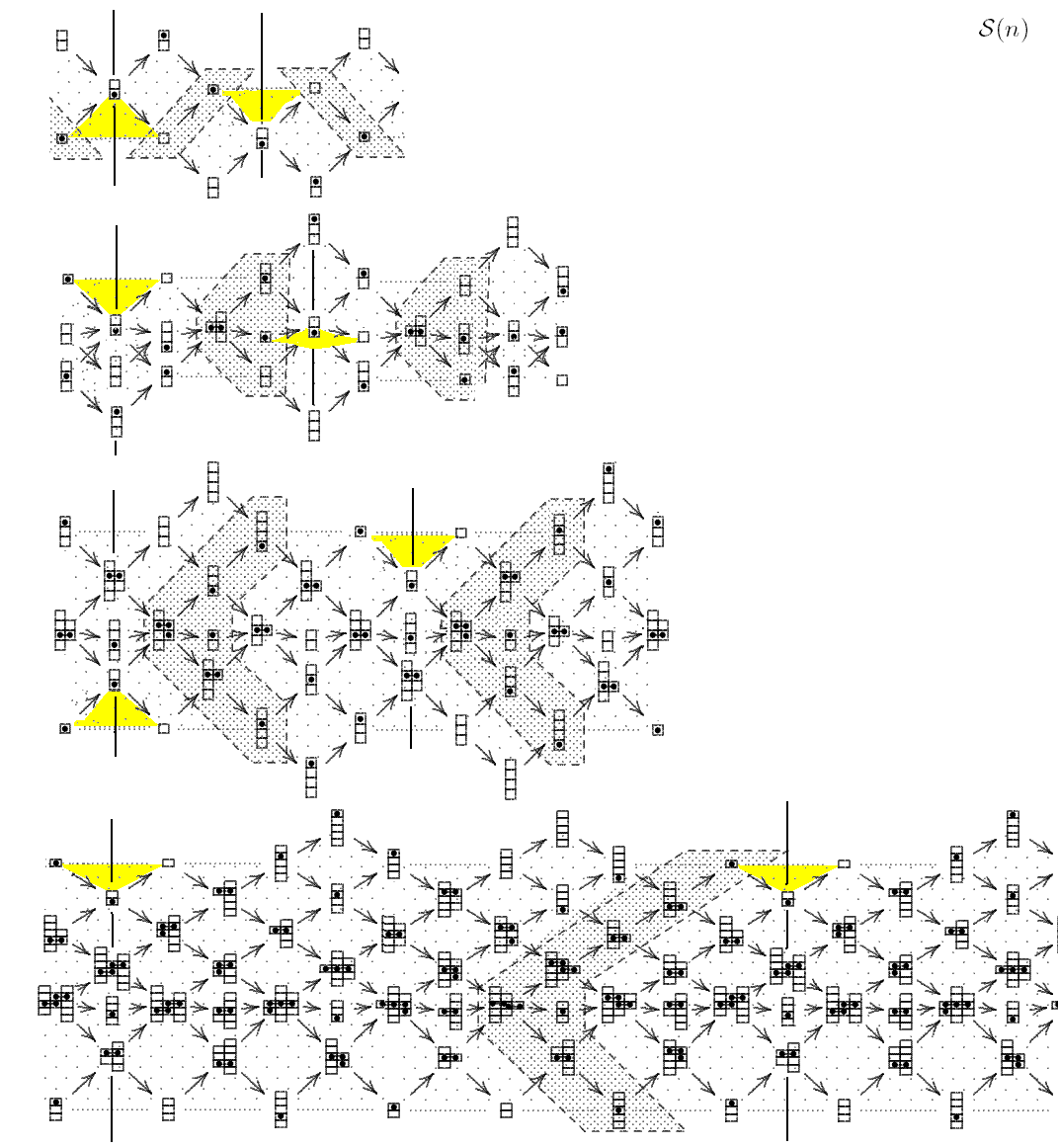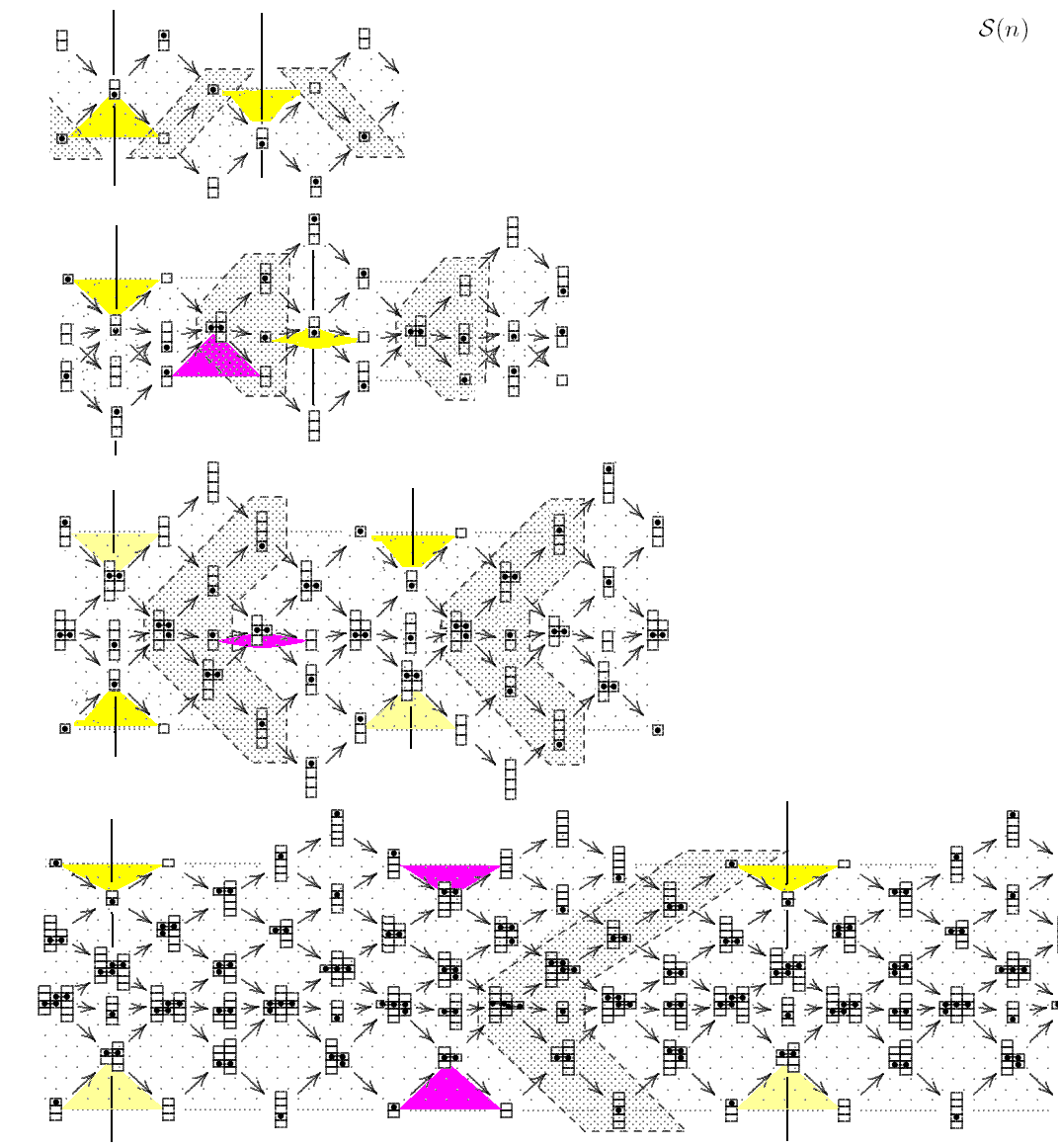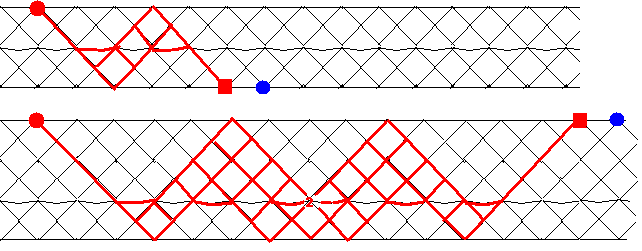
We use P(1,1) as marking γ = 0 (the "zero slope")

Consider for a > 0 the middle term (V,T,U) of the non-split exact sequence
0 → P(a,0) → (V,T,U) → P(0,a) → 0.
The partition of (V,T) is (a+1,a-1).
.gif)

4 important constructions:
In which way are these functors interrelated?
First formula (Happel):
| S = τΣ |
The Serre functor S for the stable category:
Look at the hammocks (well-known for ZΔ, see already Gabriel).

| τ6 = (shift)n-6 |
Interpretation: For n < 6, the shift is in the direction of τ-,
for n > 6, the shift is in the direction of τ+;
Bold interpretation: We try to rewrite the second formula as
| (shift) ~ τ6/(n-6) |
| 2 + 6/(n-6)× 2(n-1) |
Let us exhibit the values of the formula for n ≤ 13
| n | 2 + 6/(n-6)×2(n-1)
| 1
| 2
| 2
| 5
| 3
| 10
| 4
| 20
| 5
| 50
| 6
| ∞
| 7
| -70
| 8
| -40
| 9
| -30
| 10
| -25
| 11
| -22
| 12
| -20
| 13
| -130/7
| ...
| ...
| |
|---|
The meaning of the negative number is not clear at all.
Also, it seems to be curious that many of these numbers are divisible by 5.
Of course, 2 + 6/(n-6)×2(n-1) = 10n/(6-n), but a direct Interpretation of this formula is not known.
Illustration for a = 1.

We see: with growing n, the length of the hammock grows fast.
Precise formula later. First a formula for Σ2:
Formula:
| Σ2 = (shift)n |
Better:
Third formula:
| Σ = (shift)3τ3 |
Illustration: Apply τ3 to P(1,0).
This concerns the boundary of the non-stable component.
Claim: τ3P(1,0) is P(n-1,0), shifted appropriately.
Here, we only have to look at three AR-sequences: the (n-1)-(n-1)-seuquence (first: left term is P(n-1,0), right term is P(0,n-1), middle term has as total space (n-2,n)); second: the AR-squence whose middle term has P(0,n) as direct summand - left term is P(0,n-1), right term is P(1,n-1); third the AR-sequence with left term P(1,n-1) and right term P(1,0).)
Here the case n=7 (for any n > 3, only the parts above the water-line change,
the part inside the water remains as depicted).

| Σ2 = (shift)6τ6 = (shift)6(shift)n-6 = (shift)n |
| S3n = Σ4n-6 |
| n | 2 | 3 | 4 | 5 | 6 | 7 | 8 | 9 | 10 | ... | lim
| power of Σ
| 4n-6 | 4 | 12 | 20 | 28 | 36 | 44 | 52 | 60 | 68 |
|
| power of S
| 3n | 12 | 18 | 24 | 30 | 36 | 42 | 48 | 54 | 60 |
|
|
| Calabi-Yau-dimension
| (4n-6)/(3n) 1/3 | 2/3 | 5/6 | 14/15 | 1 | 22/21 | 13/12 |
10/9 | 17/15 |
| 4/3
| |
|---|